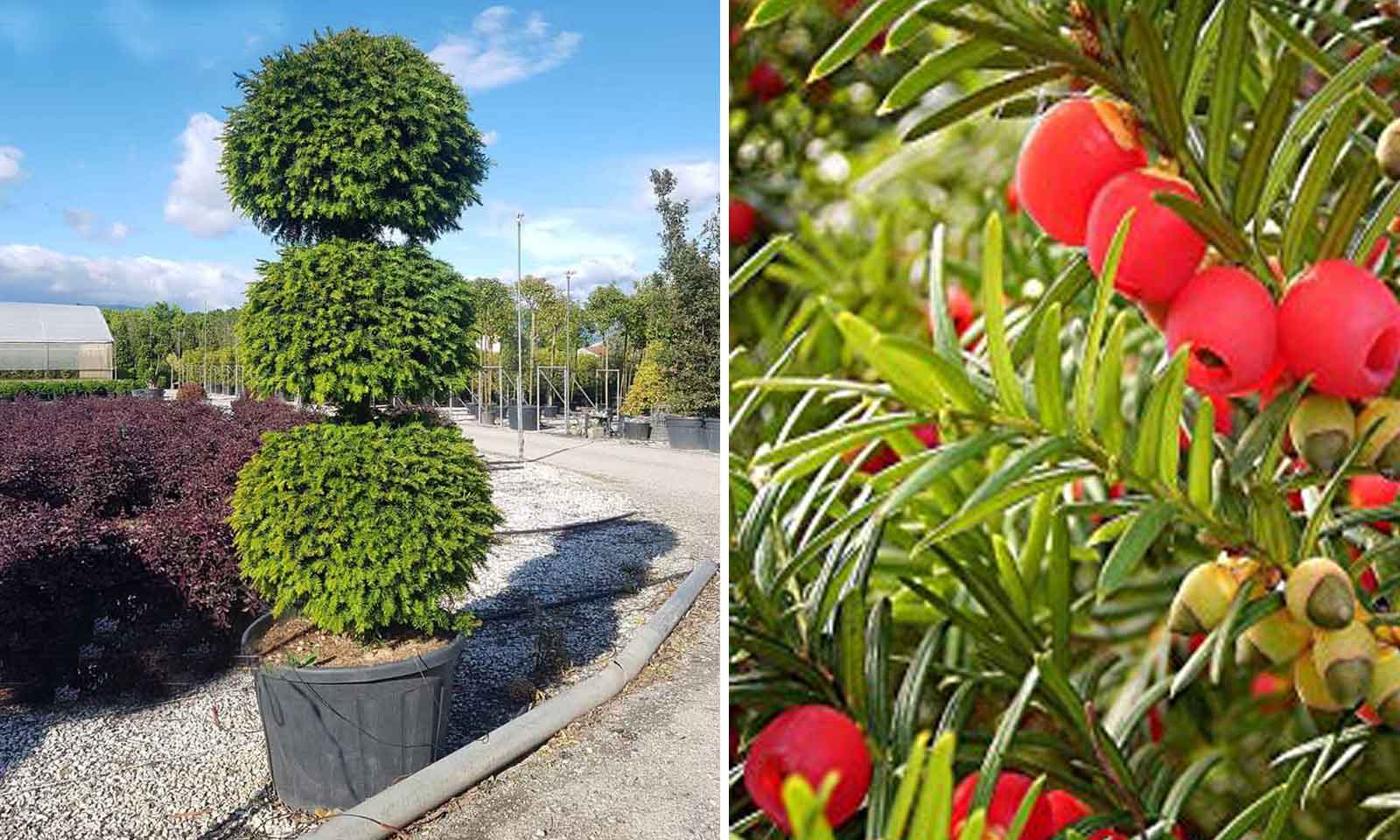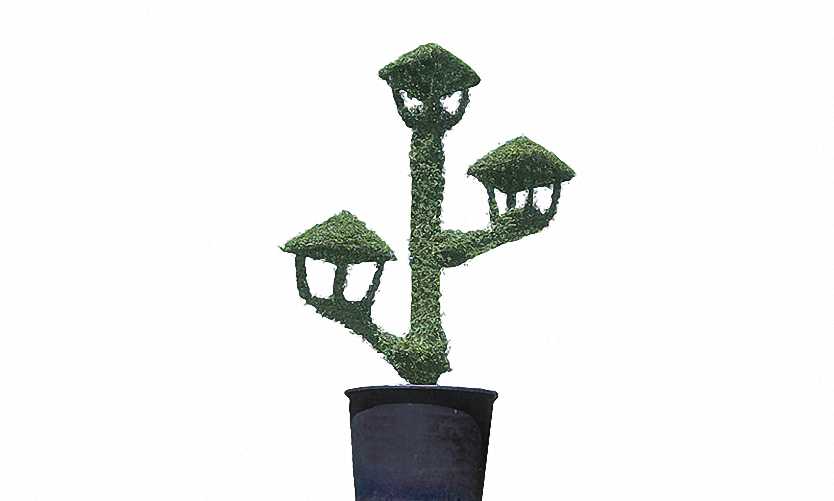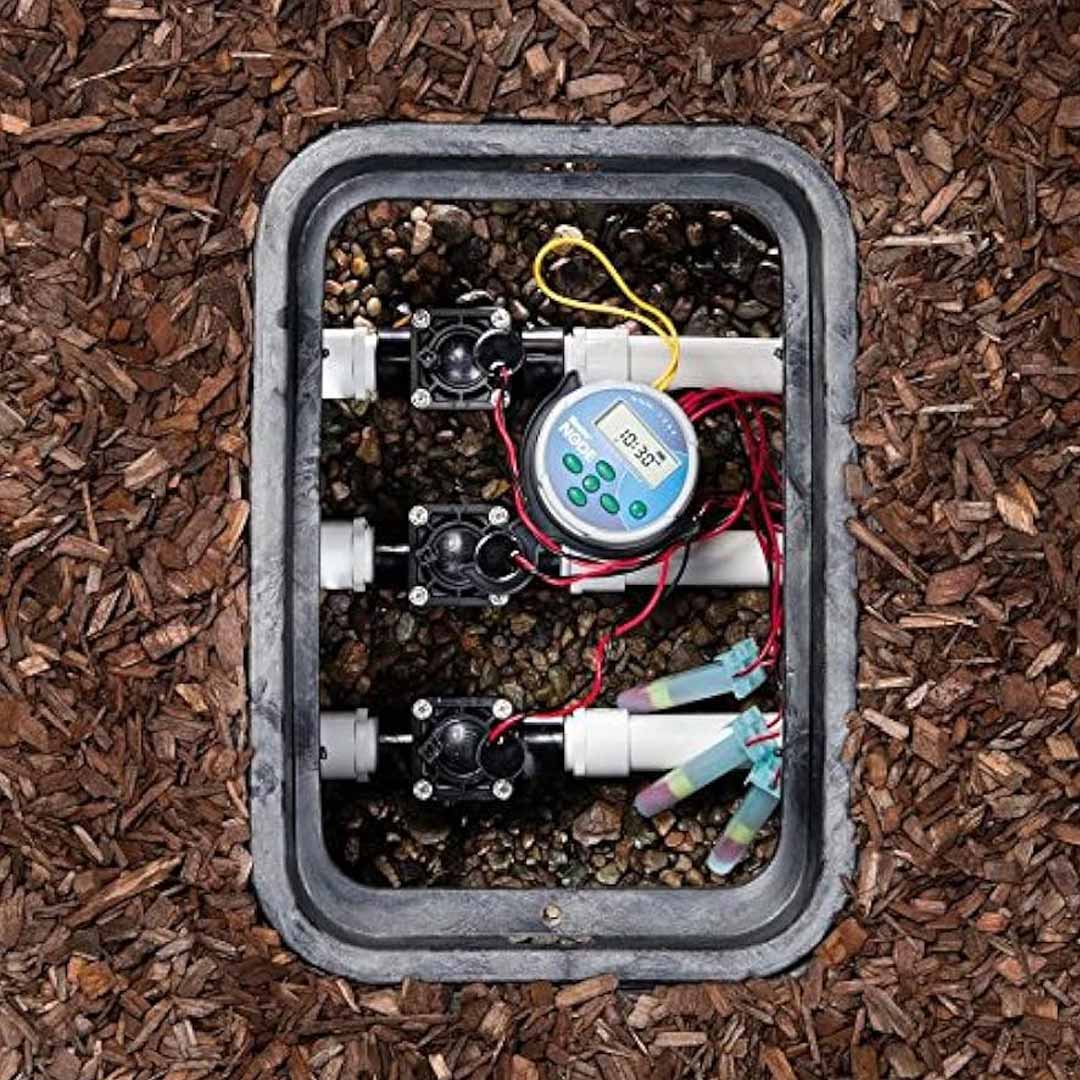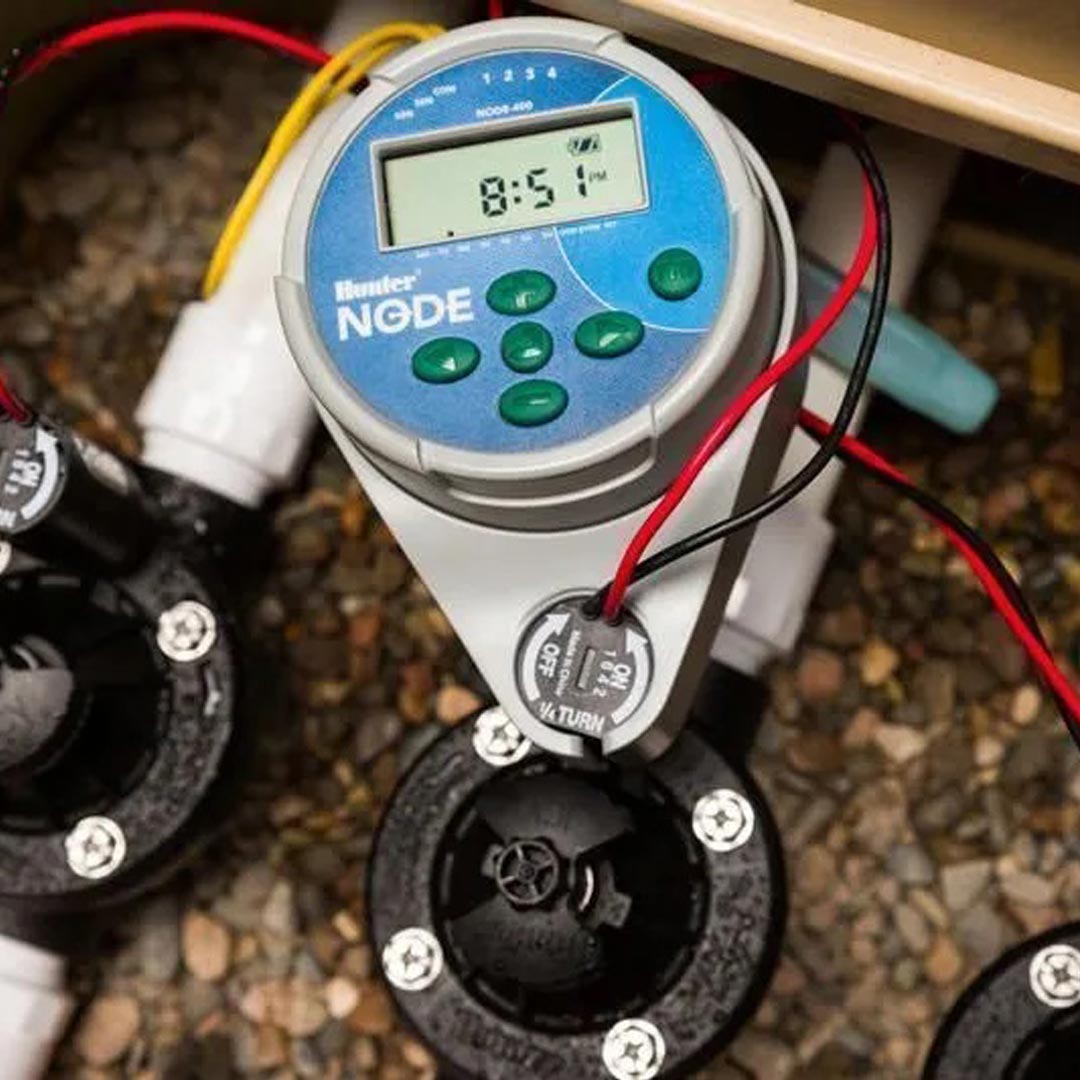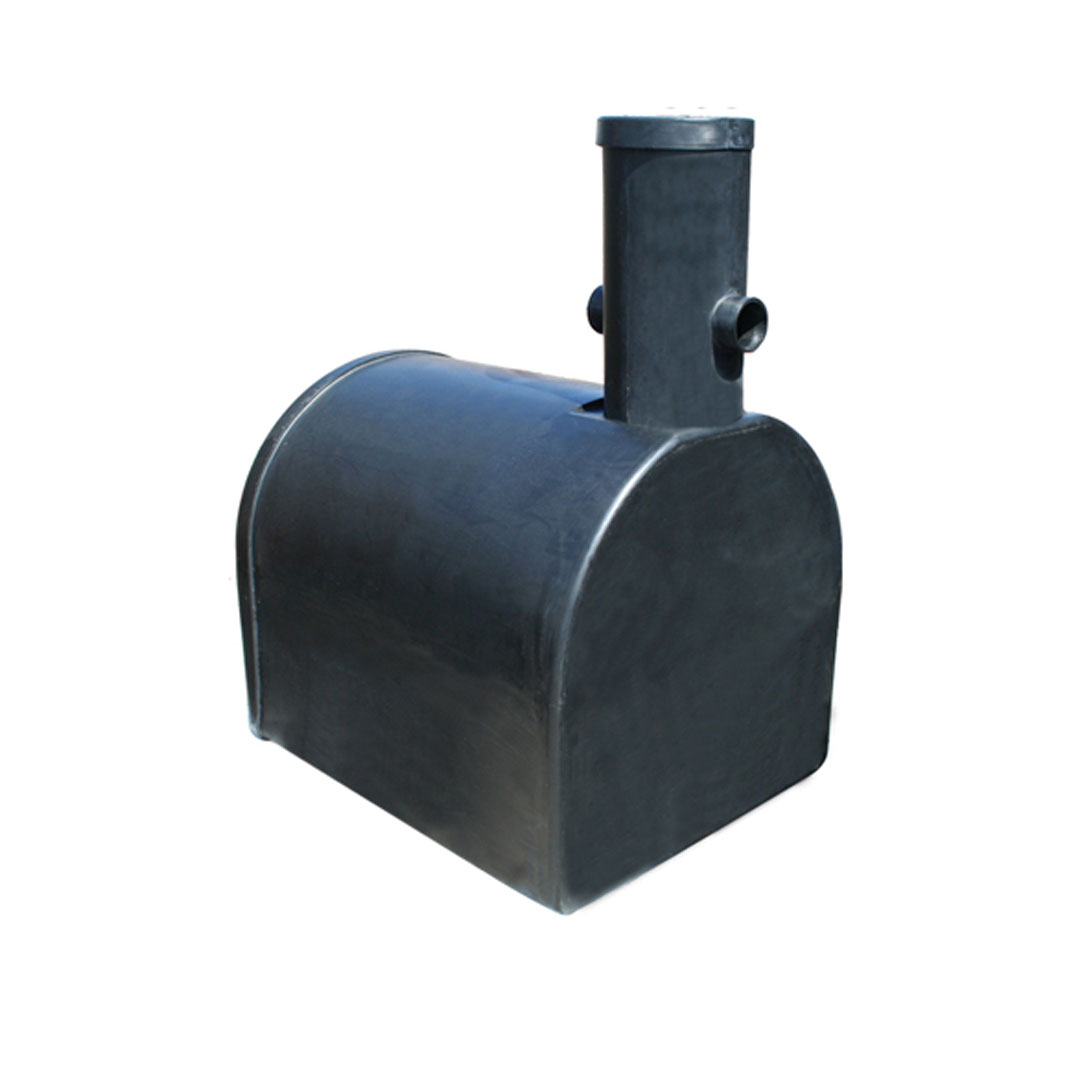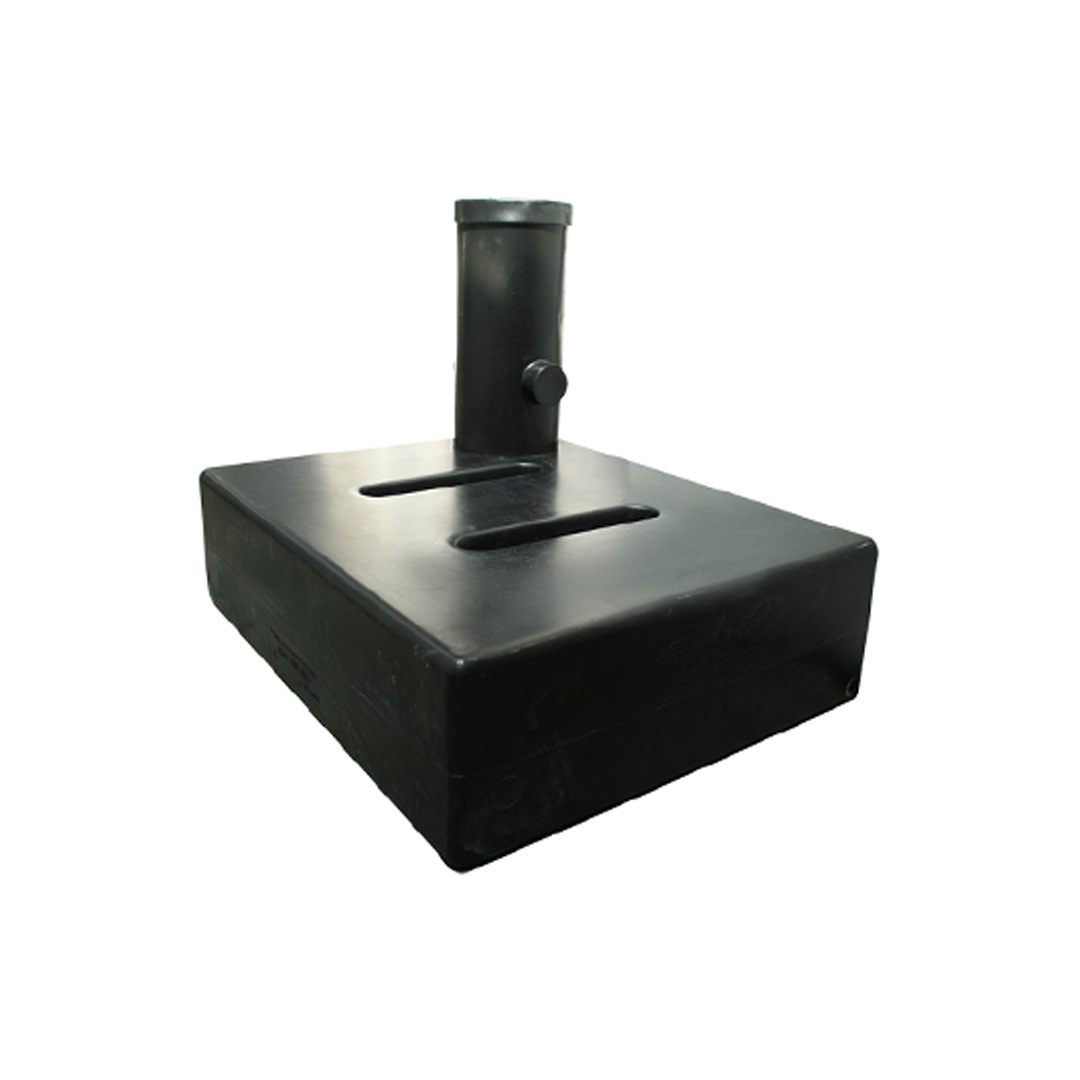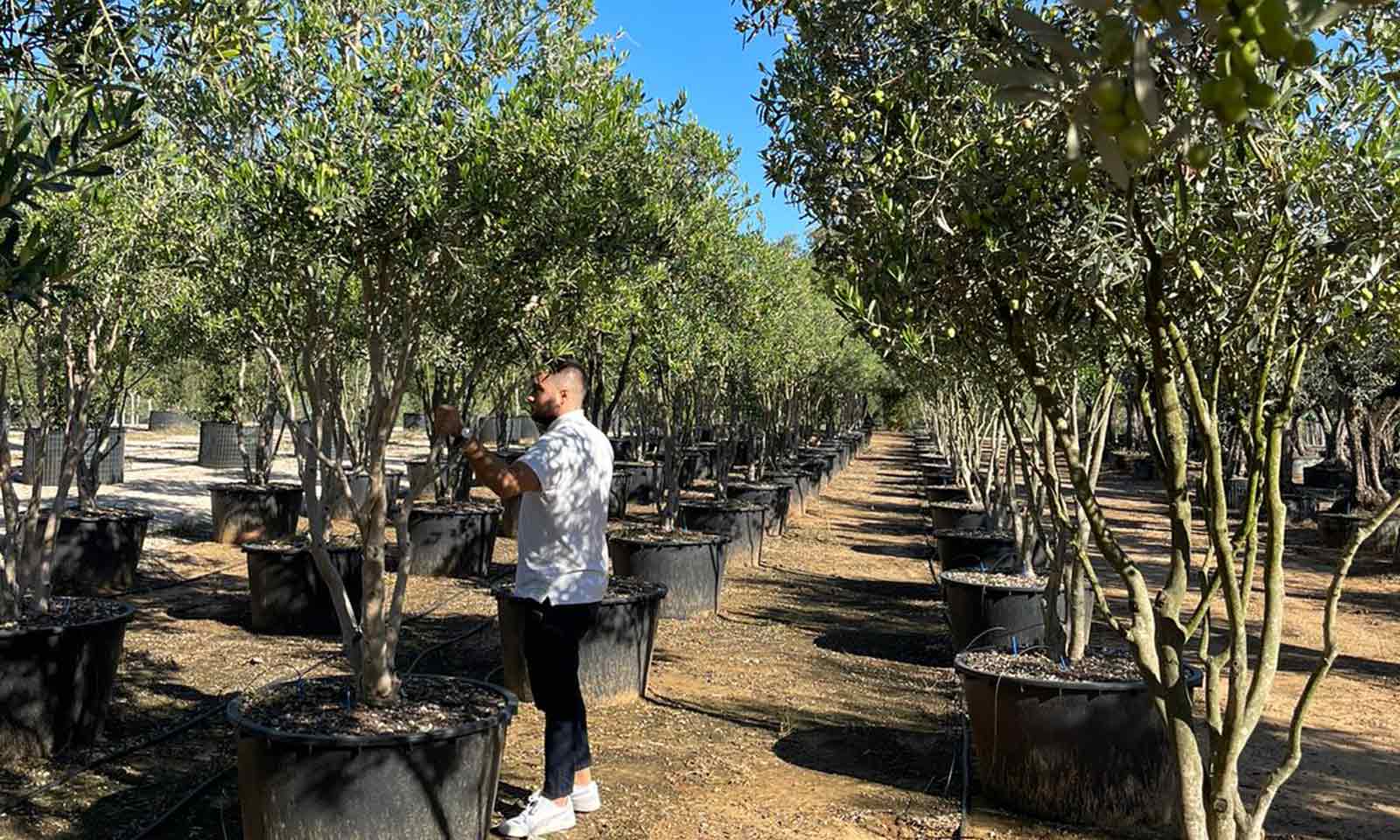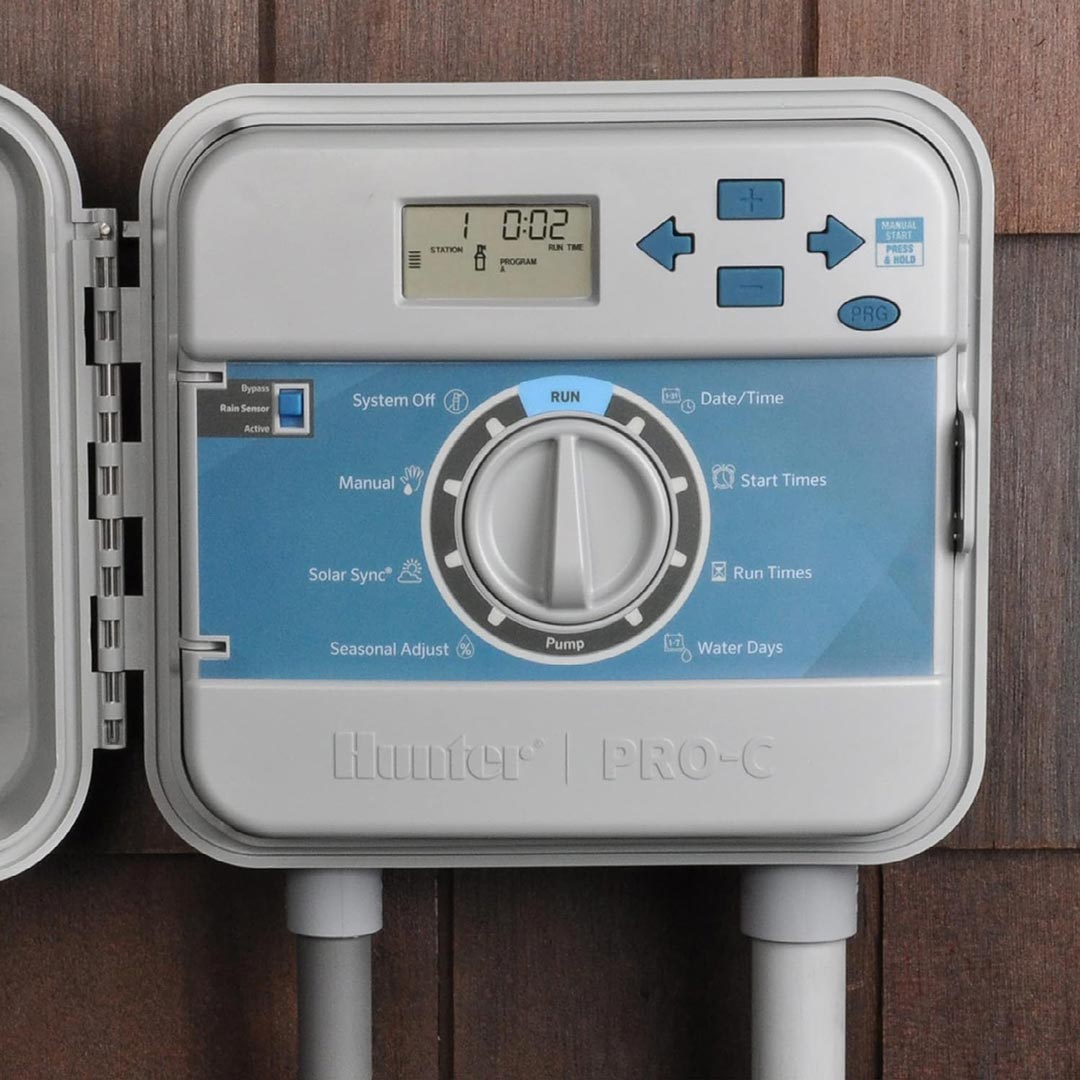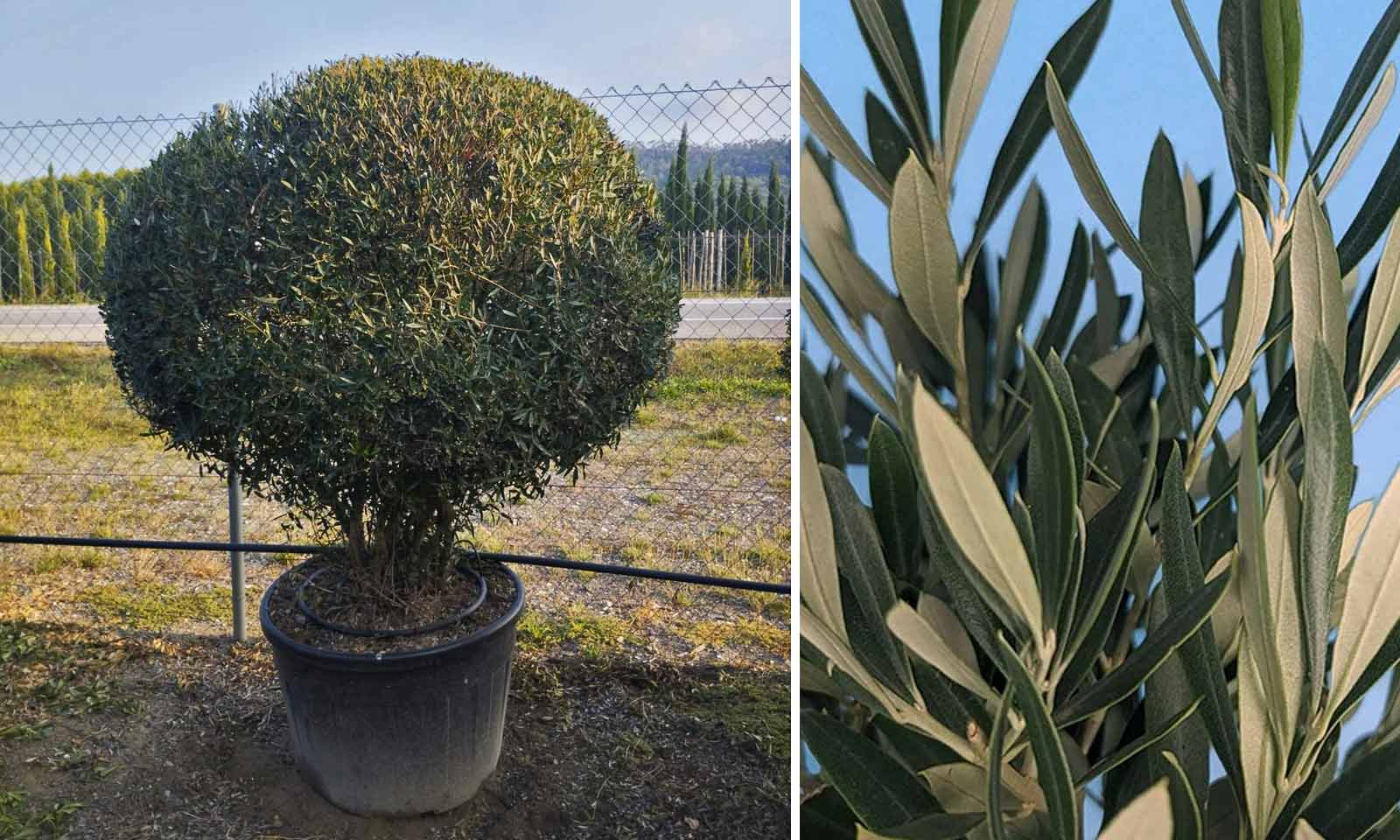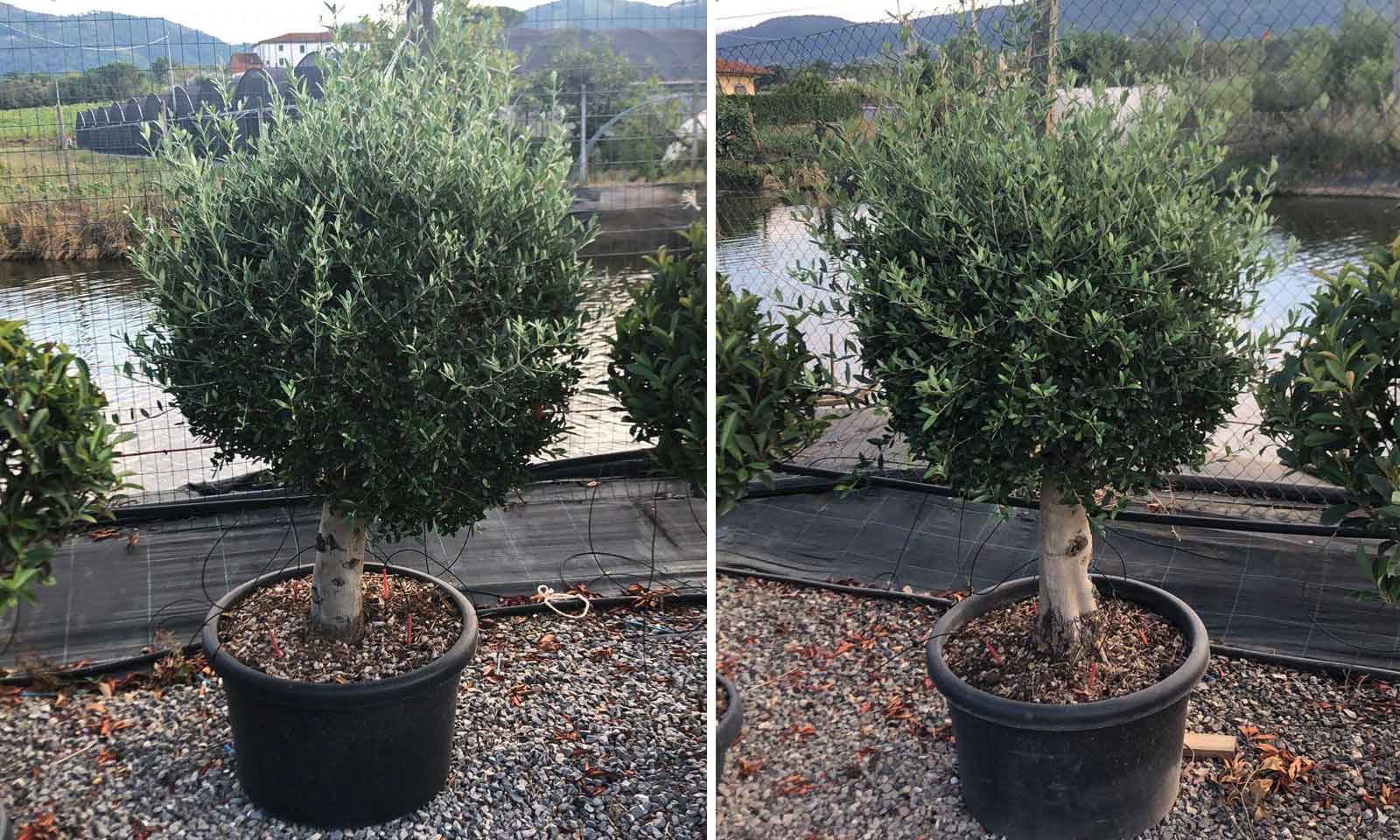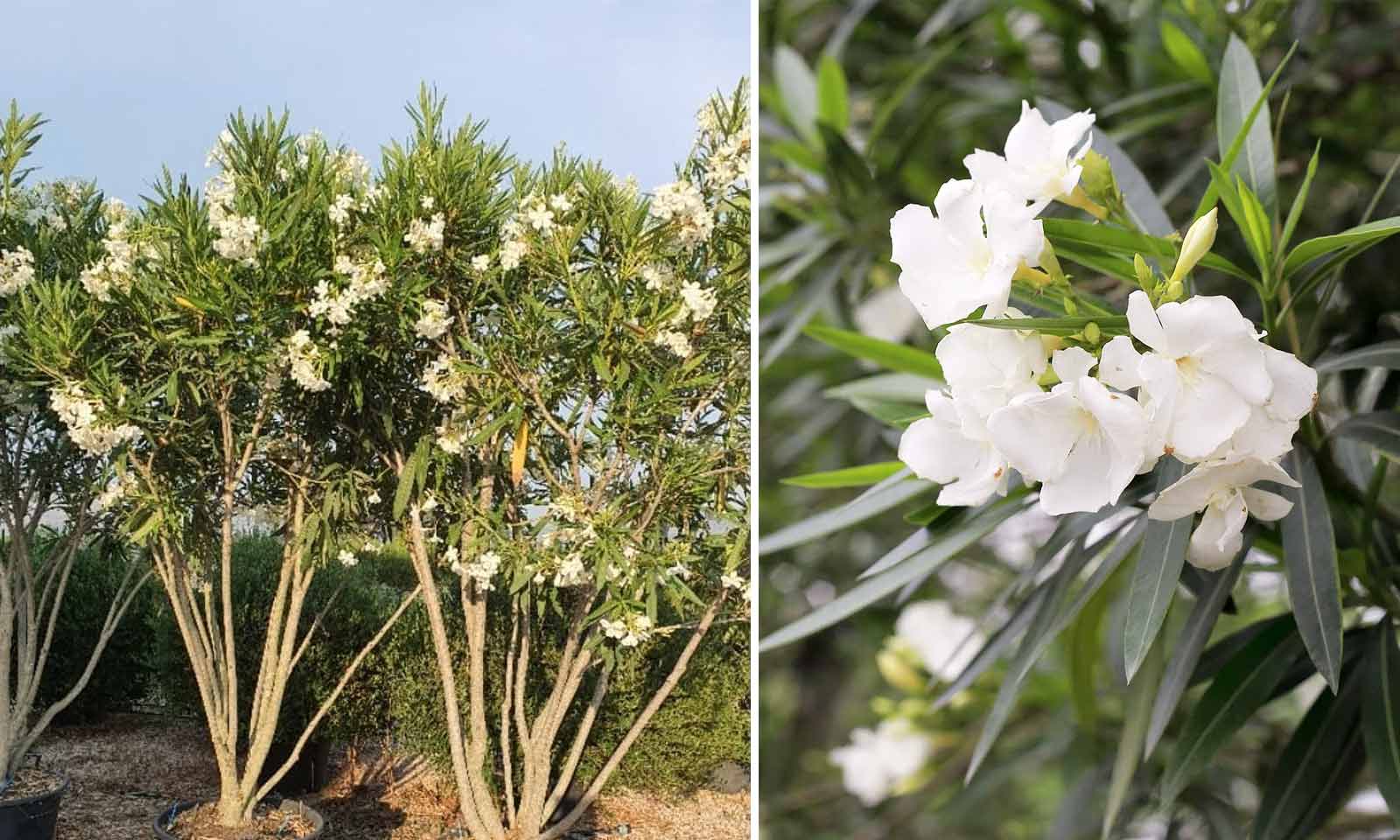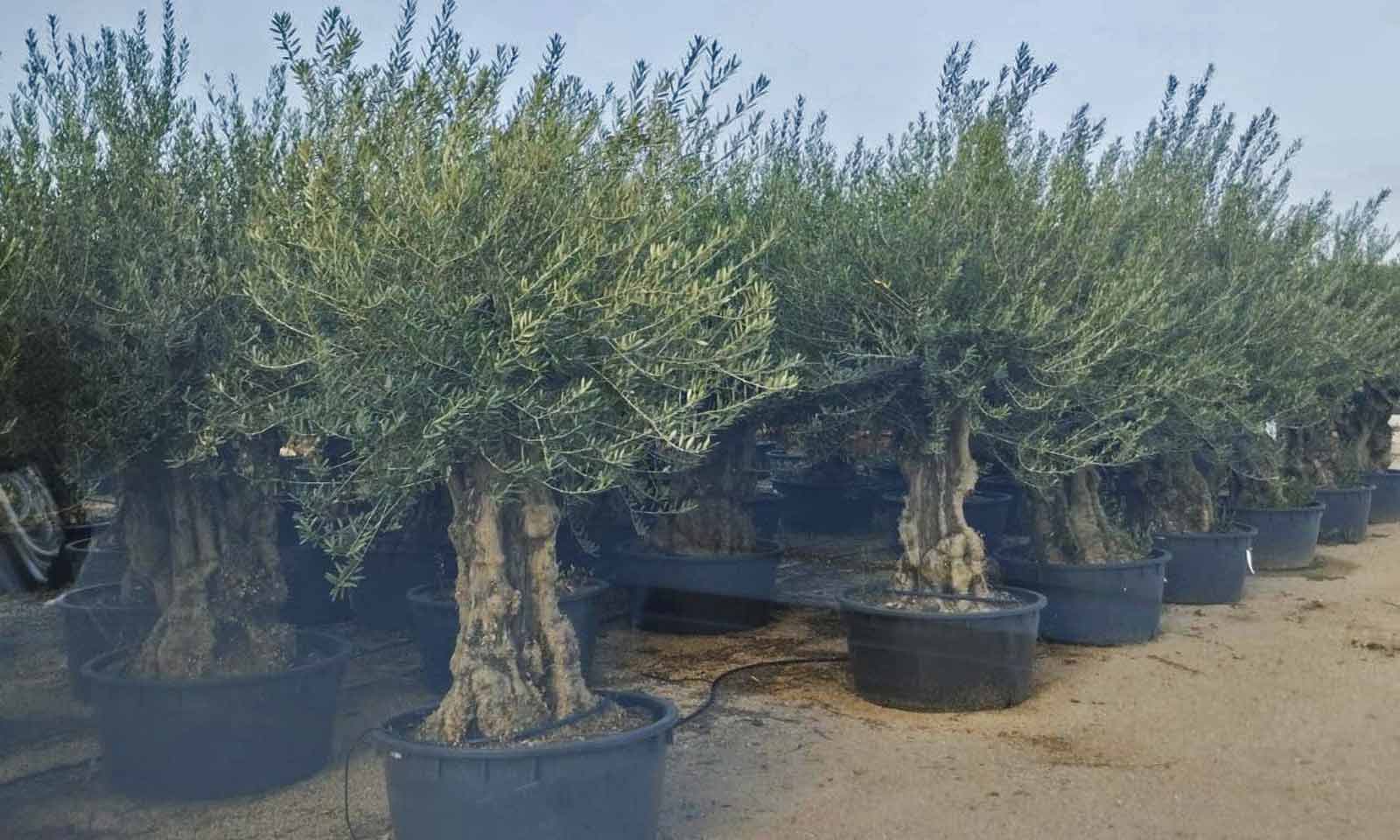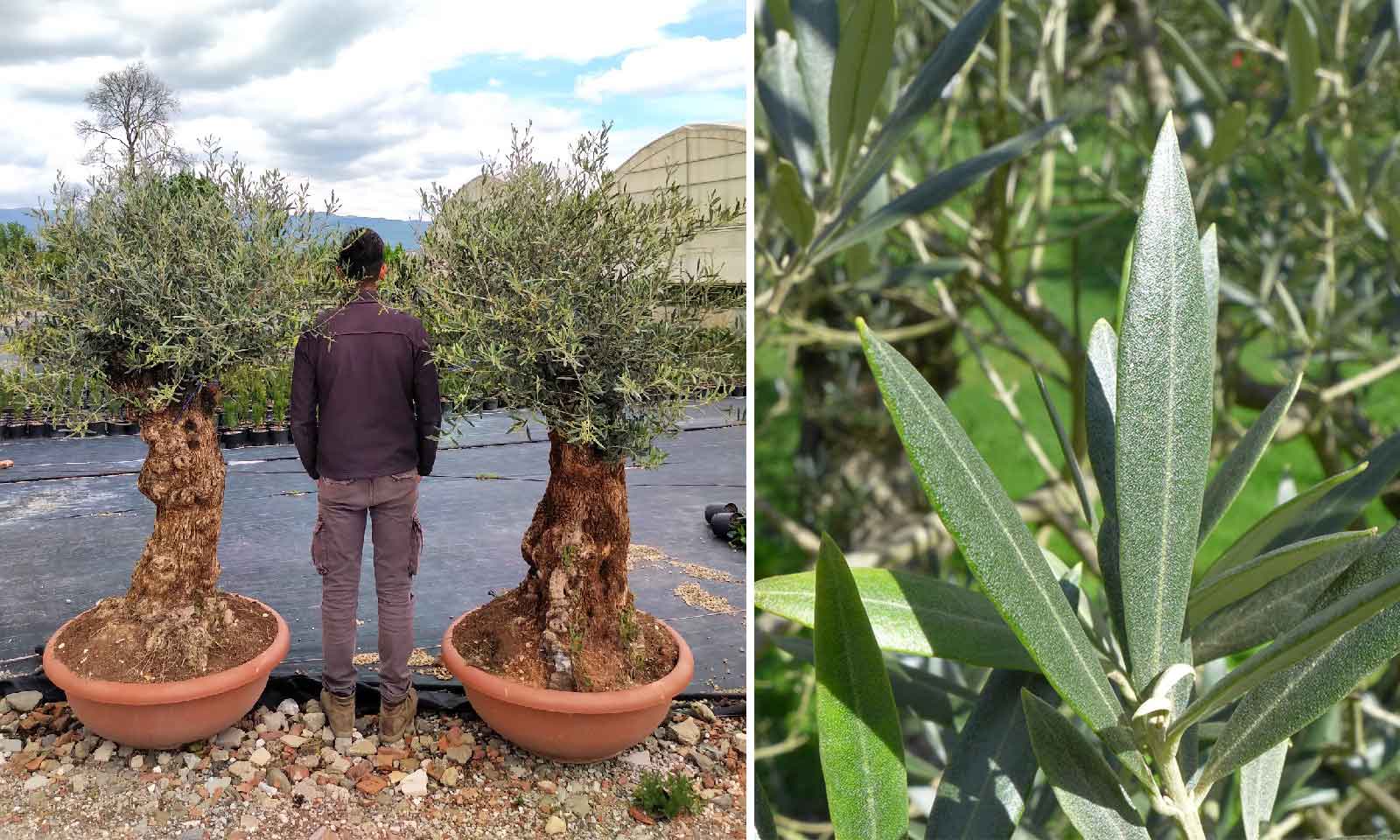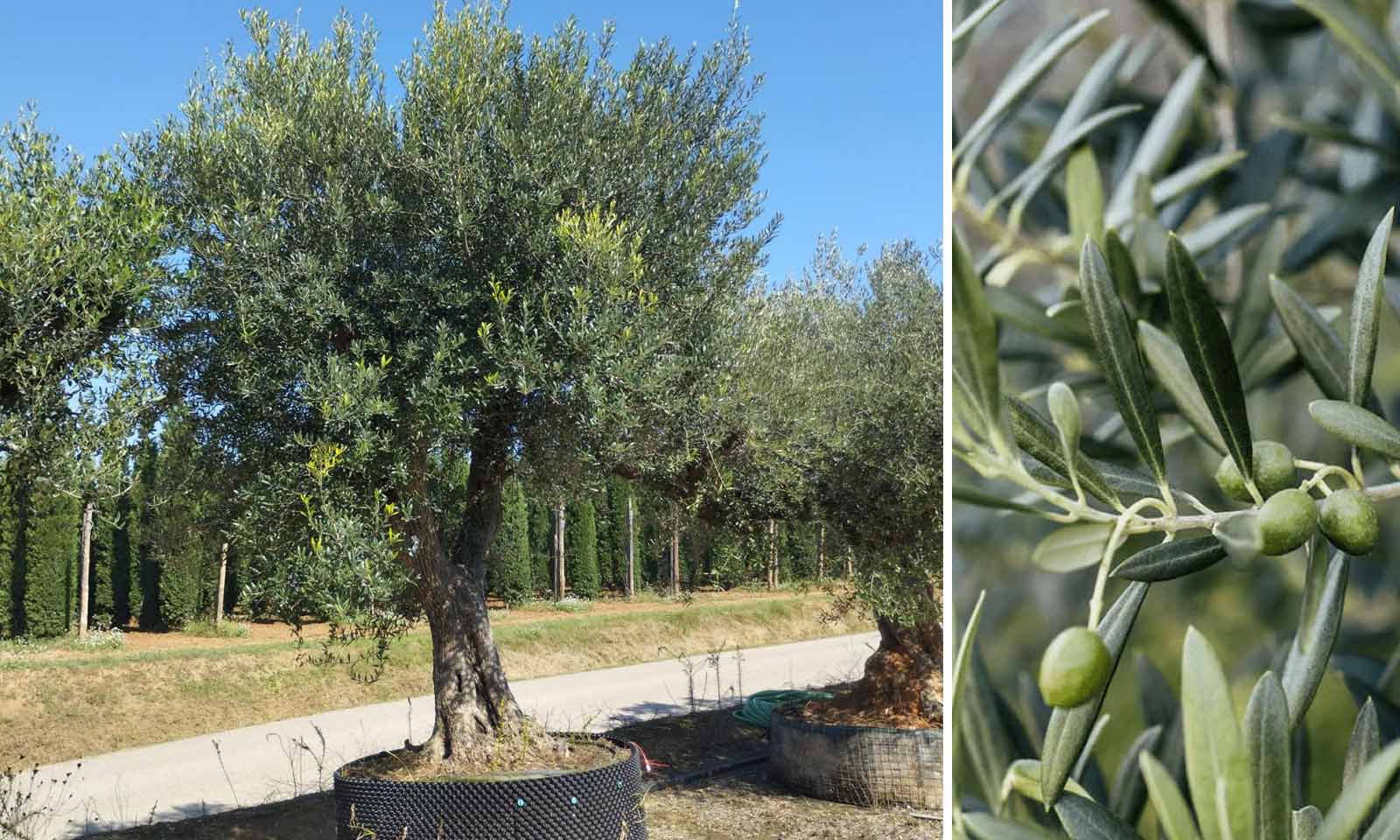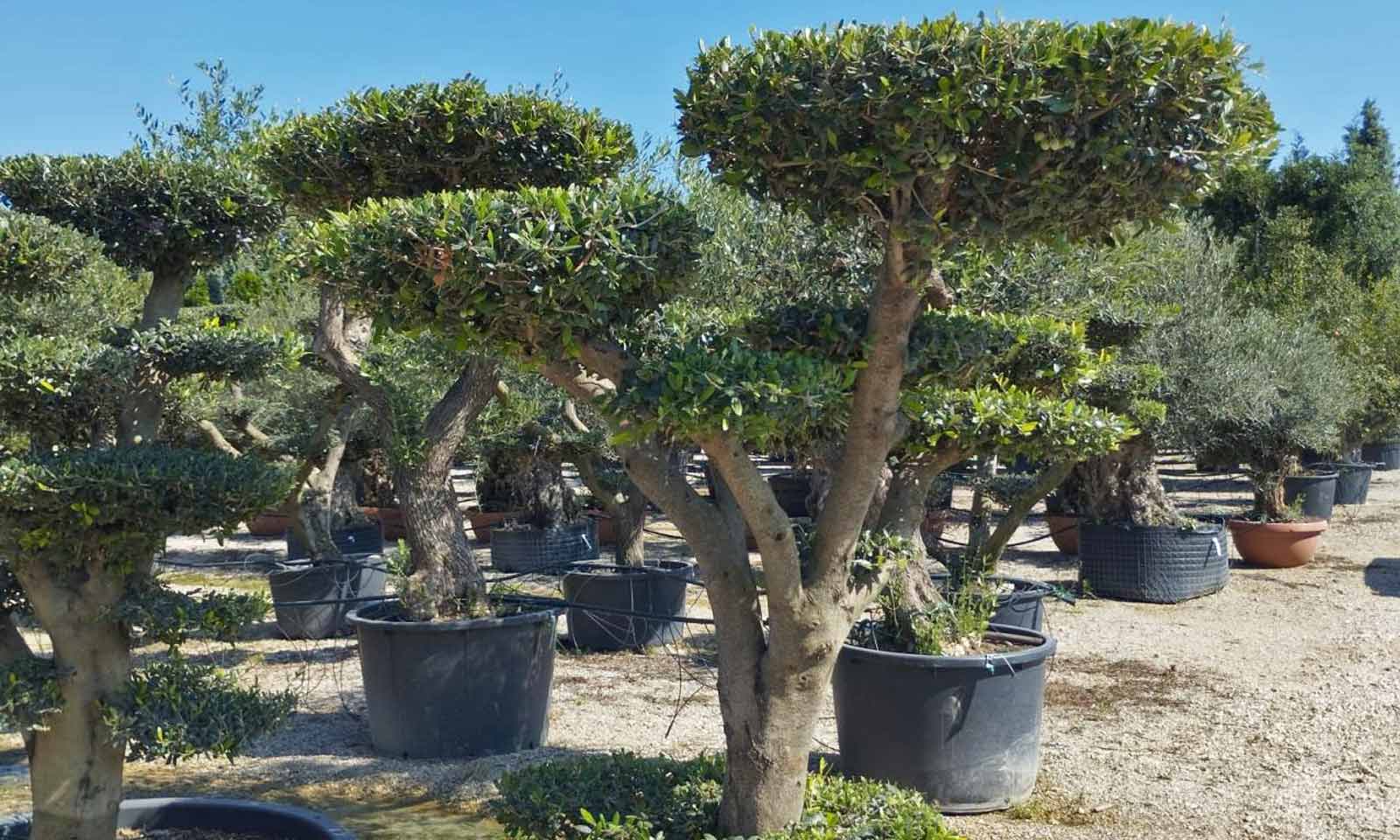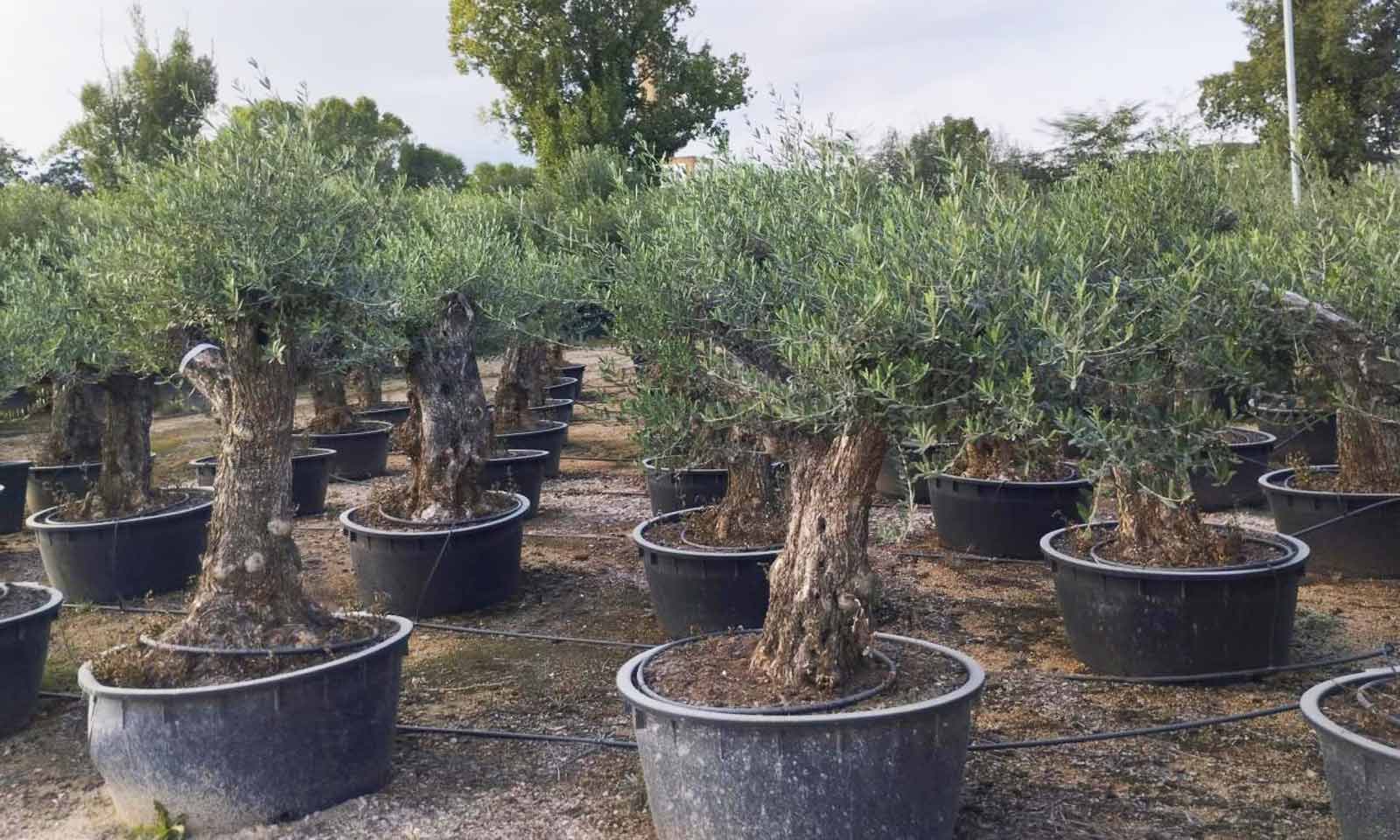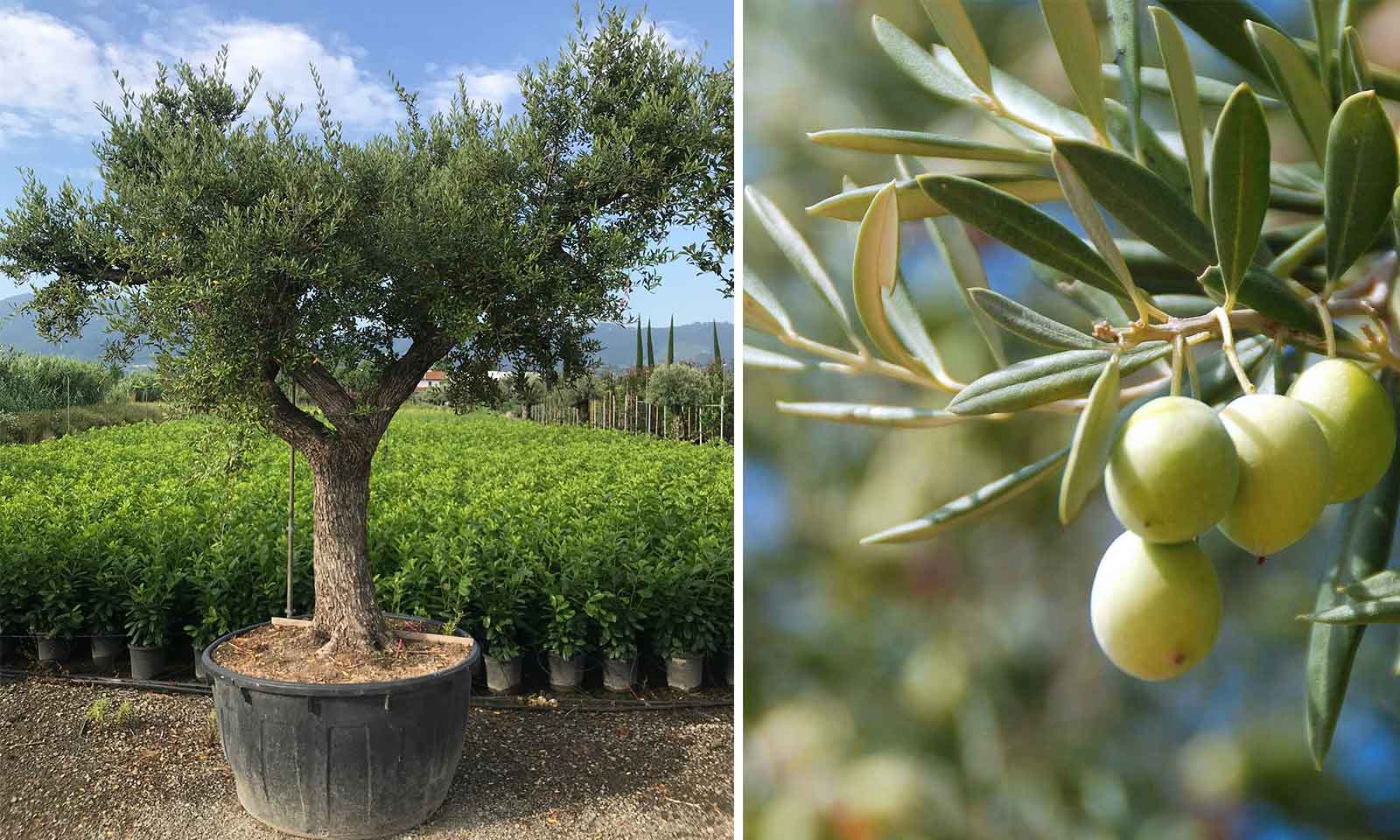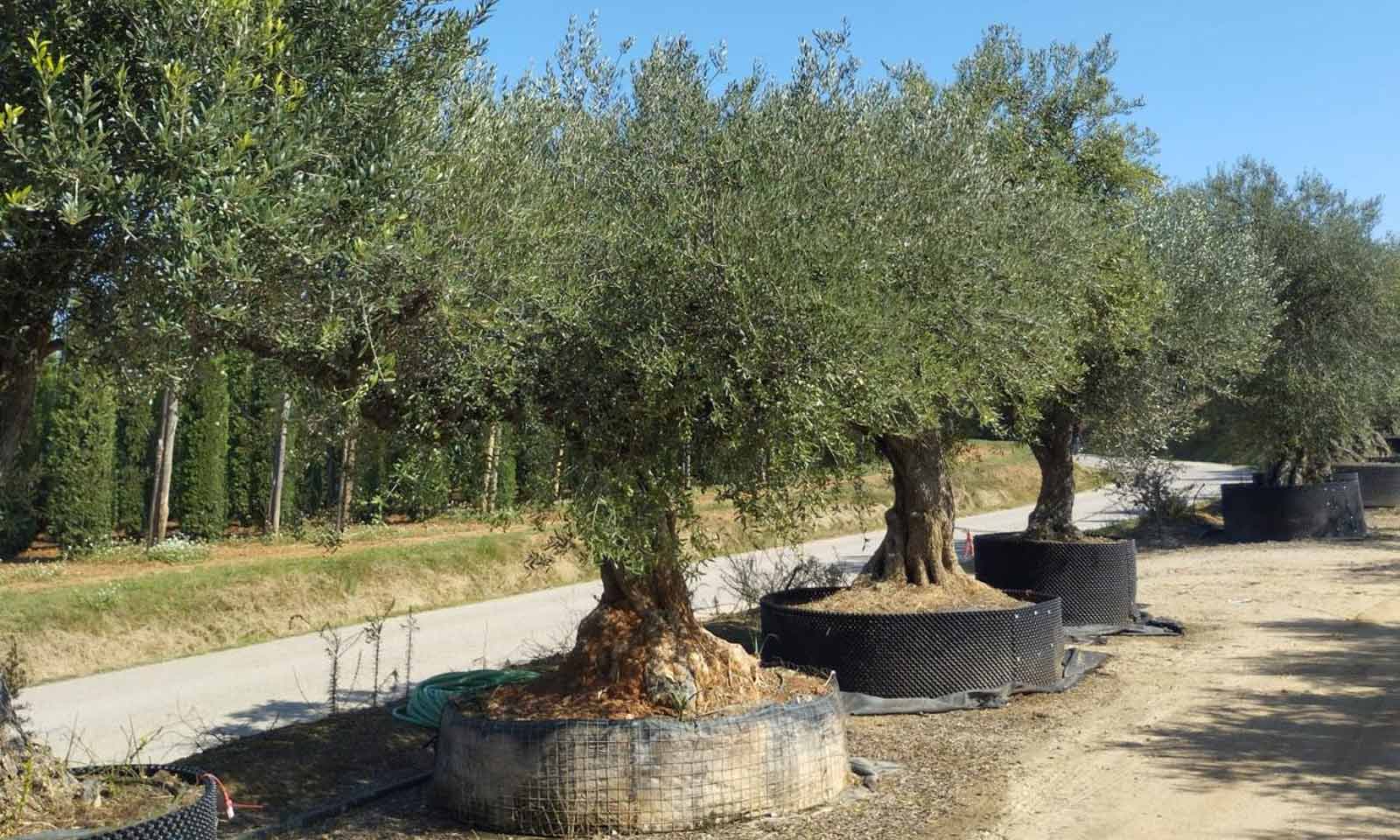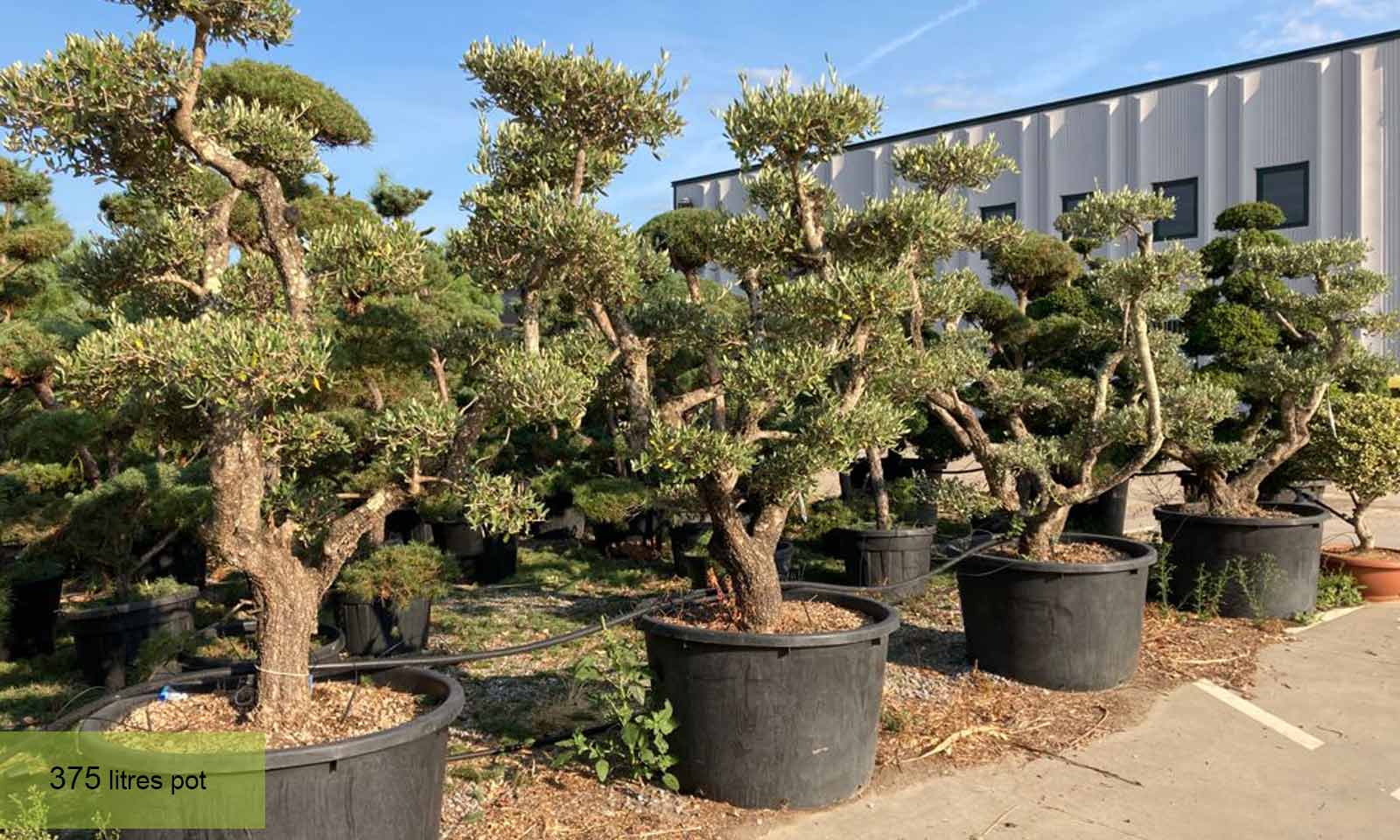Common Olive Tree (Olea Europea) – Multi-Stem - Extra
Origin: Mediterranean basin. One of the longest living evergreen trees (up to 2000 which very slowly grows to the height of 9m with a width of 5-7m, even wider it has enough spacе. When the plant is young the trunk is straight and covered in a smootn, silvery-grey bark. Later the trunk becomes twisted, knobbly, dark and often with cavitie Leaves: evergreen, opposite, leathery, oval or narowly oval, glaucous green and smoot on the upper surface, paler and covered in a silvery tomentum on the underside. Flowers apper from April to June and are white, not very showy but fragrant, joined in clusters at the leaf axil. Fruit Olives: botanically speaking they are ovoidal drupes which contain one seed (the stone), they are green and turn black when thеy ripen in autumn. Olive oil is produced by pressing the olives. Cultivation: the Olive tree loves the sun and does not like excessive moisture It requires deep, dry, permeable soil, if possible a south-facing position protected from strong winds. Tolerates drought. Hardiness: botanists place it in Zone 9 but experience has taught us that in the last 20 years the Olive tree can withstand temperatures of -7/-10°C, more or less occasional, without suffering damage.
Product Dimensions
240 litre pot: height 250 - 300 cm (8.2 - 9.8 ft)
Latin Name: Olea Europaea
English Name: Olive Tree / Common Olive
Species: Oleaceae
Genus: Olea
Foliage Type: Evergreen.
Foliage: Glaucous Green.
Flower: White.
Flowering Period: April-June.
Suggested Location: Outdoor.
Suggested Soil Type: Well-drained. Chalk. Clay. Loam. Sand.
Suggested Exposure to Sunlight: Full Sunlight.
Suggested Exposure to Weather: Sheltered.
Hardiness Rating: Medium (H4)
Lowest Temperature Tolerance: -10 °C to -5 °C (14 °F to 23 °F)
Suggested Uses: Small gardens. Planting on its own. Parks or large gardens. Cultivation in pots.
Maintenance: Under glass prune to restrict size in spring.
Growth Habit: Bushy.
Growth Speed: Medium.
Final Height: 5 m – 6 m (16.4 ft – 19.7 ft)
Final Sideways Spread: 2 m – 3 m (6.6 ft – 9.8 ft)
Delivery Cost: This is calculated based on the total size, weight and quantity of your order, as well as the location of your delivery address. You will see the final price at the Online Checkout Page (before making payment). Our website will automatically calculate the lowest possible delivery price and apply discounts to orders of certain products – giving you the best value delivery every time!
Please note that high-volume orders will decrease your delivery costs significantly by spreading the price across multiple items. Visit our Delivery Policy page for more information.
